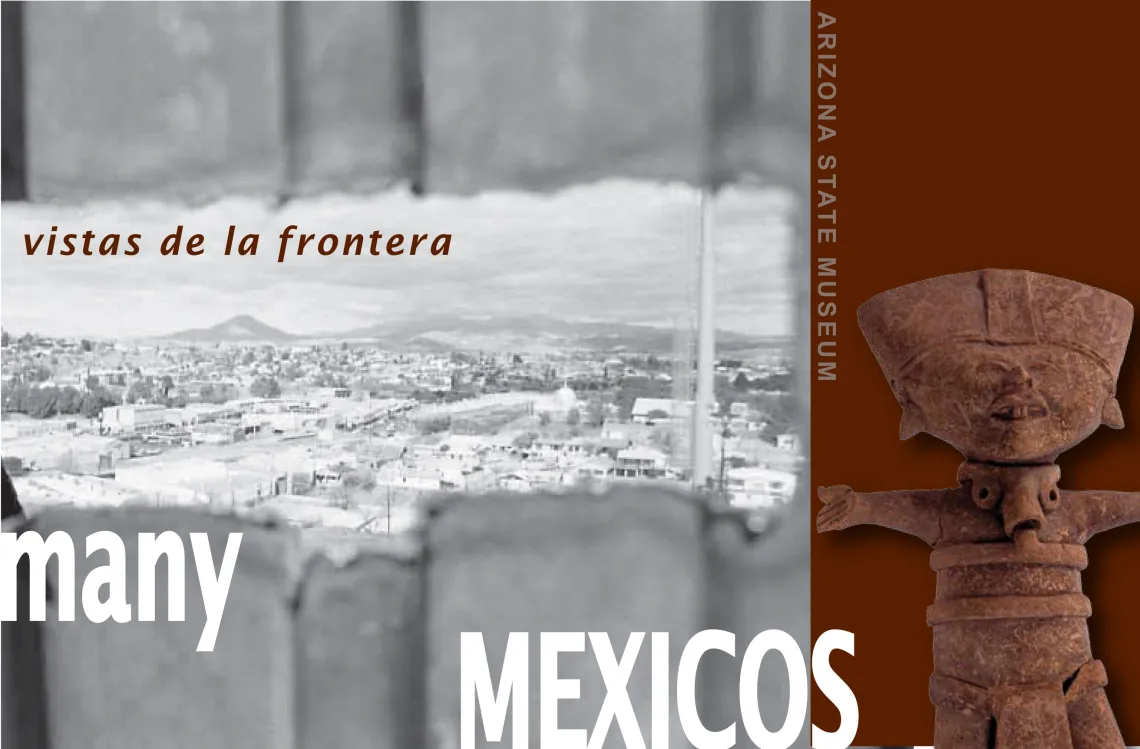
As the Arizona State Museum marks the tenth anniversary of its award-winning exhibit, Many Mexicos: Vistas de la Frontera, recent events that have engulfed our state, our nation, and indeed our world prompted me, as the lead curator, to revisit its beginnings. The rapid spread of COVID-19 has wreaked havoc on the populations of the U.S. and Mexico, slowing the ebb and flow of people and goods across the international border and raising serious questions about each country’s ability, or willingness, to confront a virus that refuses to respect man-made boundaries. At the same time, community-based social movements on both sides of the border continue to press policymakers to confront racial injustice, economic inequality, and the erosion of human rights. By their very nature, anniversaries invite us to reflect upon the past and anticipate what tomorrow might bring in light of what we have learned.
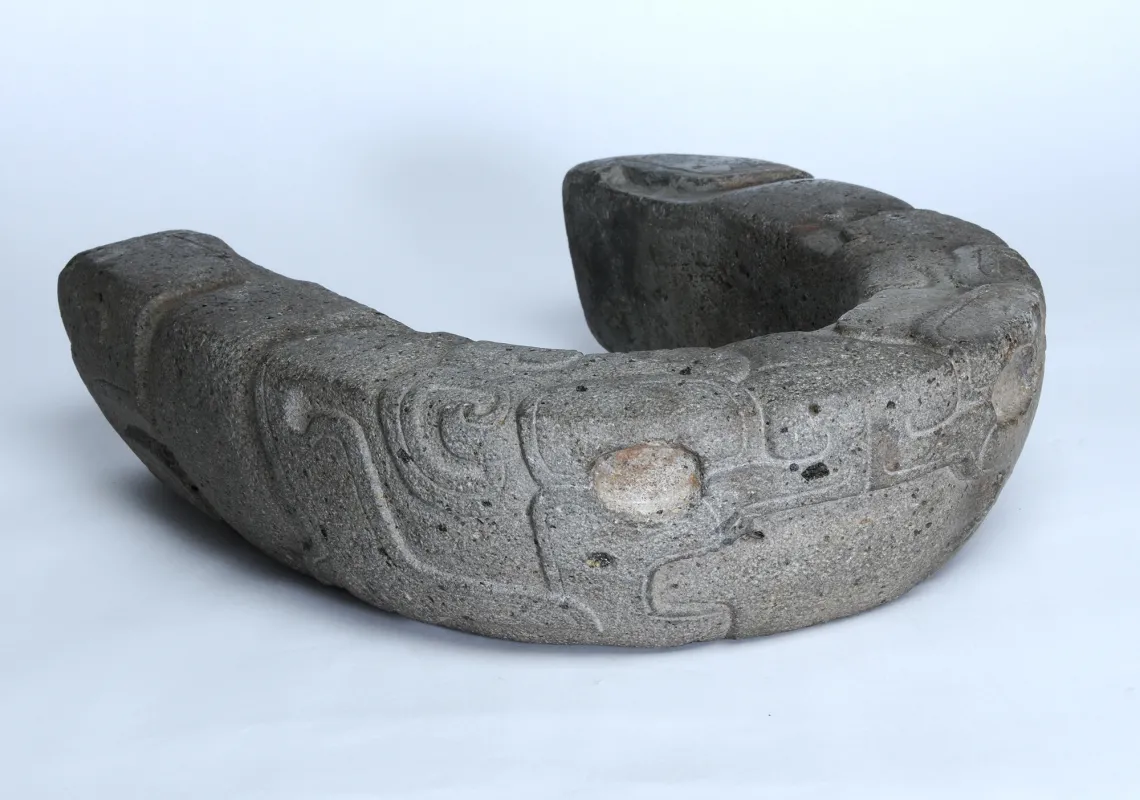
Jaguar Yoke ca. 600–900 C.E. Gulf Coast Veracruz Culture, Mexico. Late Classic Period, Greenstone. Length: 15 in. (38 cm.), Width: 13 in. (39.5 cm.), Height: 4 in. (10 cm.). Gift of Frederick R. Pleasants, 1962 (ASM Catalog No. A-22754). Hover your mouse over the image to zoom in.
A decade ago, Arizona attracted national attention when the state legislature passed SB 1070, one of the toughest state laws directed against undocumented immigration. Political debate gave way rather quickly to polemic; comity and judicious argument fell victim to a discord that lashed out at all things Mexican. Not surprisingly, since the Arizona State Museum is an integral part of the University of Arizona—a research university with deep roots in the land-grant tradition of higher education—its faculty and professional staff wanted to share their expertise and educate the general public. The result was an object-rich exhibit accompanied by a compelling but accessible narrative that reflected current research and scholarship. Simply put, the exhibit sought to inform the visitor about Mexico’s rich and varied past, the profound economic, social, and cultural links between Mexico and the United States, and the contested ways in which the international border simultaneously attracts and divides people.
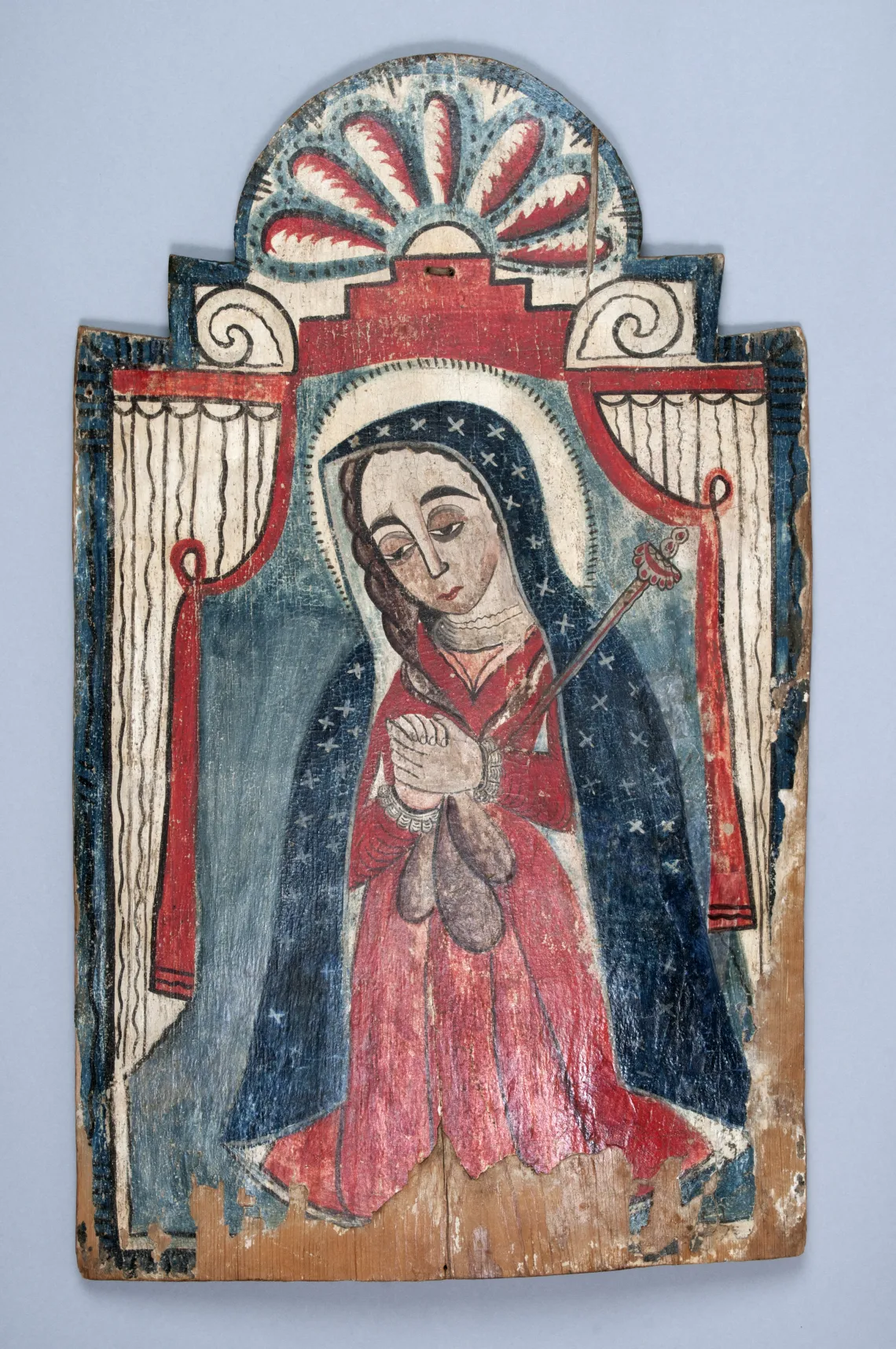
Our Lady of Sorrows Retablo, ca. 1826-65,attributed to José Rafael Aragón. Spanish-American, Santa Fe, New Mexico. Painted on gessoed pine. Gift of Ernest N. Stanton, 1962 (ASM Catalog No. E-5342).Hover your mouse over the image to zoom in.
During its two-year run, Many Mexicos welcomed myriad visitors that included students, teachers, retirees, local and out-of-state tourists, foreign travelers, visiting scholars, and community groups. Attentive parents and their children marveled at the large, U-shaped Mesoamerican ceremonial ballgame yoke; Mexican abuelitas instinctively made the sign of the cross in front of the various religious images displayed in the exhibit; college and high school students wanted to grip Santa Anna’s sword or put Maximilian’s ring on their fingers, although such moves would have triggered the alarms; and many visitors were drawn to the manda or barra, the material symbol of Indigenous leadership that dates to the Pre-Columbian and Spanish colonial periods of Mexican history. The jaguar masks and Huichol beads were colorful and striking, for sure, and the hat that supposedly graced the head of the revolutionary Pancho Villa made for an engaging conversation piece even as it raised eyebrows of incredulity, but what did it all mean? The U.S. Supreme Court blunted some of SB 1070’s reach, but did Many Mexicos change the hearts and minds of its visitors? Even the savviest museum professional in charge of gauging the visitor experience would be hard pressed to find a sure-fire formula that can measure an exhibit’s long-term impact. The reality is much simpler: curators can point to specific stories, examples, and anecdotes, but, as the maxim goes, the plural of anecdote is not data. For its time, Many Mexicos reached thousands of visitors from all walks of life and provided a seamless narrative of Mexican history; it also demonstrated to visitors how the U.S. and Mexican historical experiences are inextricably linked, notwithstanding the political fads of the day.
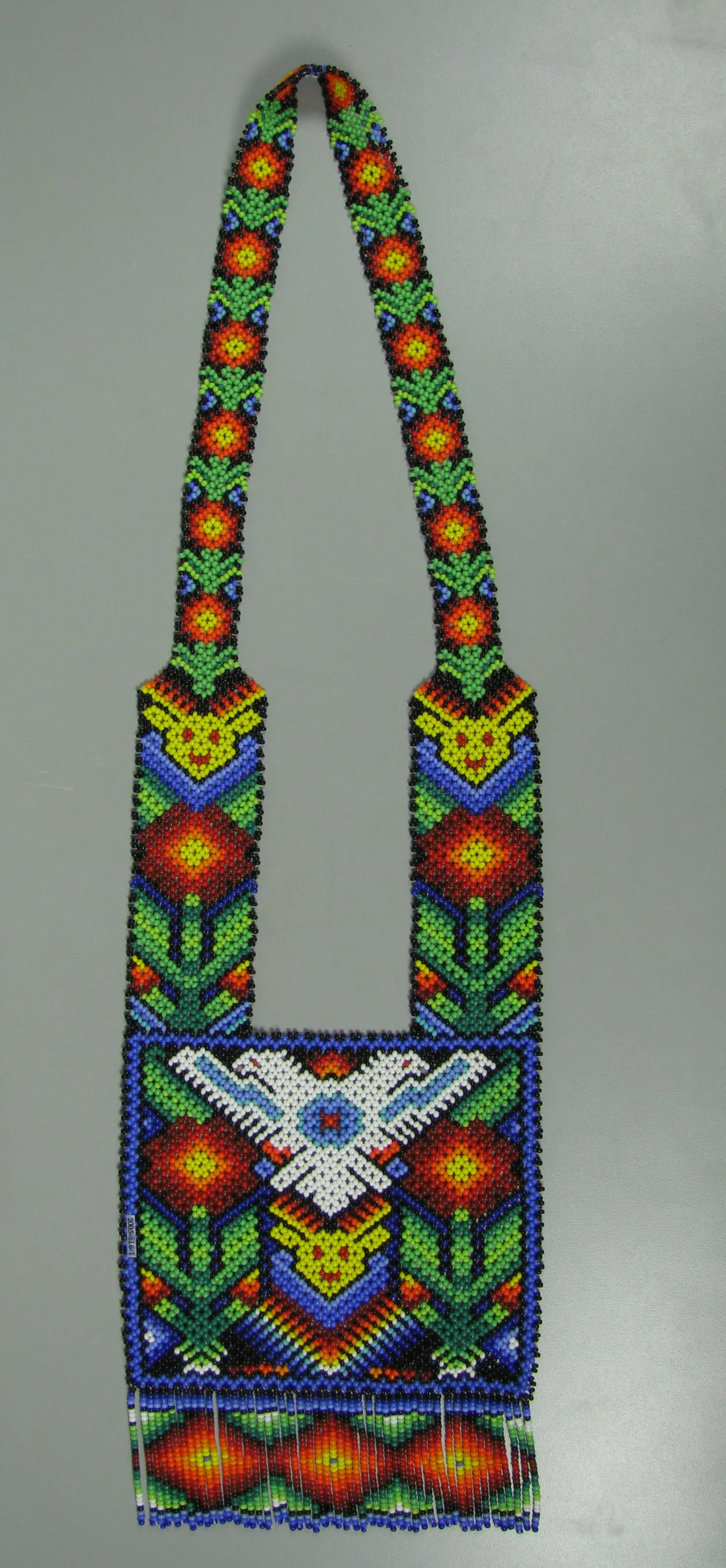
Huichol necklace, San Miguel Huaistita, Mun. of Mesquitiq, Jalisco. 44.9X12.5 cm (ASM Catalog No. 2005-616-1). Hover your mouse over the image to zoom in.
How appropriate, then, for the Arizona State Museum to now include on its website a modified version of Many Mexicos. Since the 2016 presidential campaign, the “Build the Wall” chant has become a rallying cry for some Americans who want to limit immigration to the United States, while for others it remains another political din that distracts the nation’s legislators from enacting immigration reform. Moreover, landscapes sacred to the Tohono O’odham Nation are being transformed—and wildlife habitats are disappearing— to make room for a portion of the new wall that is supposed to keep out migrants seeking economic security for themselves and their families. The federal government’s own data reveal that the number of undocumented Mexicans has dropped so sharply over the past decade that they are no longer the majority of those living in the U.S. sin papeles (without ‘papers’). In the same vein, the North American Free Trade Agreement (NAFTA) was renegotiated to better serve U.S. economic interests and fulfill the political promises made on the 2016 campaign trail. Initial assessments suggest that the new trade deal updates—rather than radically alters—NAFTA, although some of its new provisions, such as those related to automobile production and access to dairy markets, favor the United States, while its labor clauses impart additional protections to workers in Mexico. Much like what happened in the negotiations leading up to NAFTA, however, policymakers and legislators could not bring themselves to include the movement of workers as part of this new United States-Mexico-Canada Agreement. Desperate to find employment and stability in their lives, migrants will find a way around the wall, as they have since the international border was created in the mid-nineteenth century. Finally, the drug cartels continue to violently control certain swaths of Mexican territory, eliminating competitors looking to meet the ferocious demand for illegal narcotics in the United States. Coupled with the restrictions imposed on tourism by COVID-19, ‘narco-violencia’ frightens American visitors from crossing the border and upends the lives of countless Mexicans.
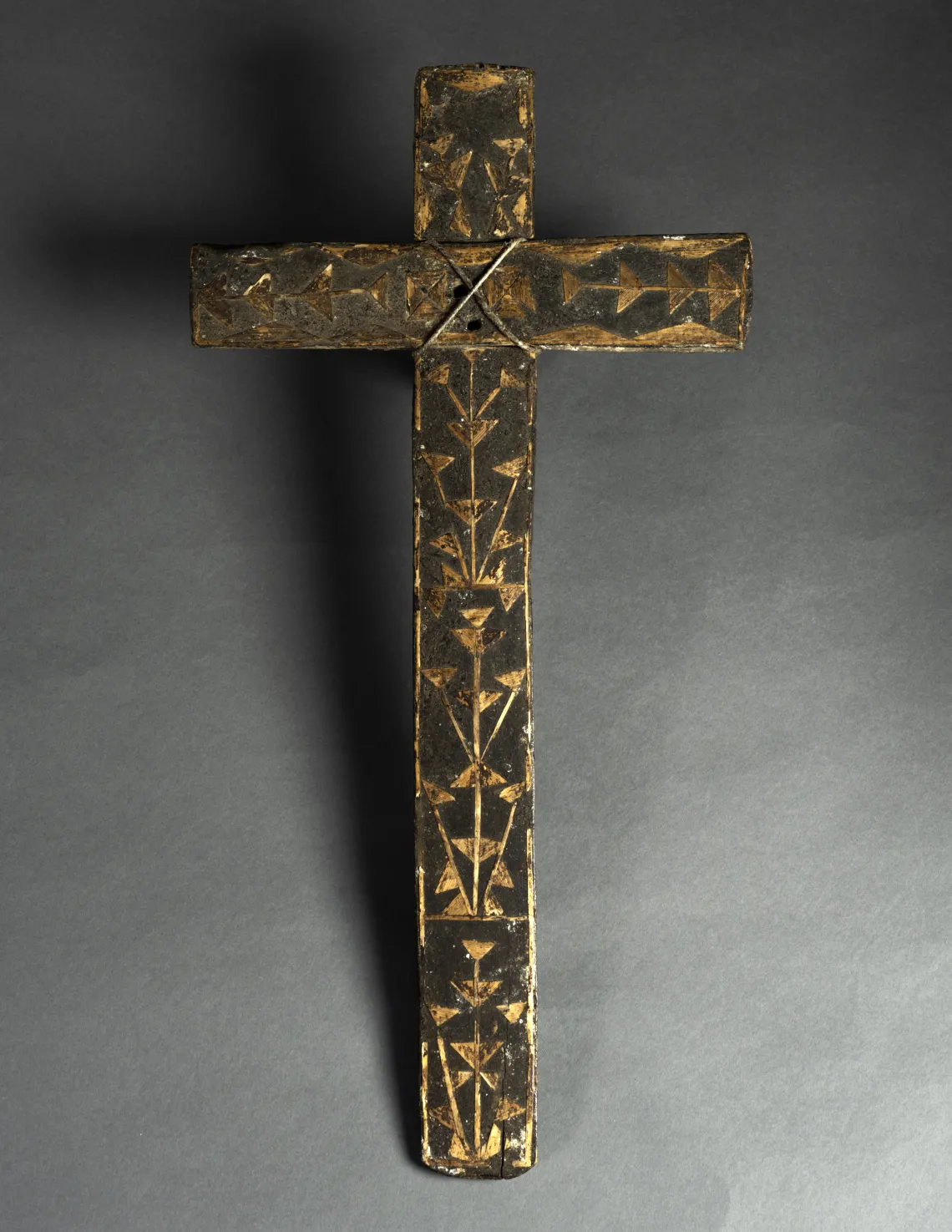
Straw inlay wooden cross, late 18th century. It ended up in Sante Fe, the administrative capital of the colony. Gift of Ernest N. Stanton (ASM Catalog No. E-5341). Hover your mouse over the image to zoom in.
Meanwhile, Mexican president Andrés Manuel López Obrador—known by his initials, AMLO—has tempered his populist sensibilities when dealing with the United States, refusing to engage in the immigration polemic or the hyperbolic rhetoric of drug violence spill-over that has come to define American politics. In fact, much to the chagrin of human rights activists and Mexico’s older political establishment, the Mexican president tends to support American requests to halt the movement of migrants from Central America or detain asylum seekers in Mexican facilities. In terms of the narco-violencia, rather than articulate policy prescriptions, he employs language such as “abrazos, no balazos (hugs, not bullets)” to convey his approach to improving security and slowing the violence. Quite tellingly, though, President López Obrador has so far enjoyed high approval ratings despite the increase in violence and the health crisis caused by COVID-19. The president continues to rail vehemently against the stubborn persistence of structural inequality and corruption in Mexican society, which, in part, has resulted in consistently high levels of support for him among the working poor and lower-middle classes. For many upper-class professionals, academics, and business leaders, however, the president remains an enigma, as he builds a political platform that combines disparate features of economic austerity, populism, and a sedate foreign policy.
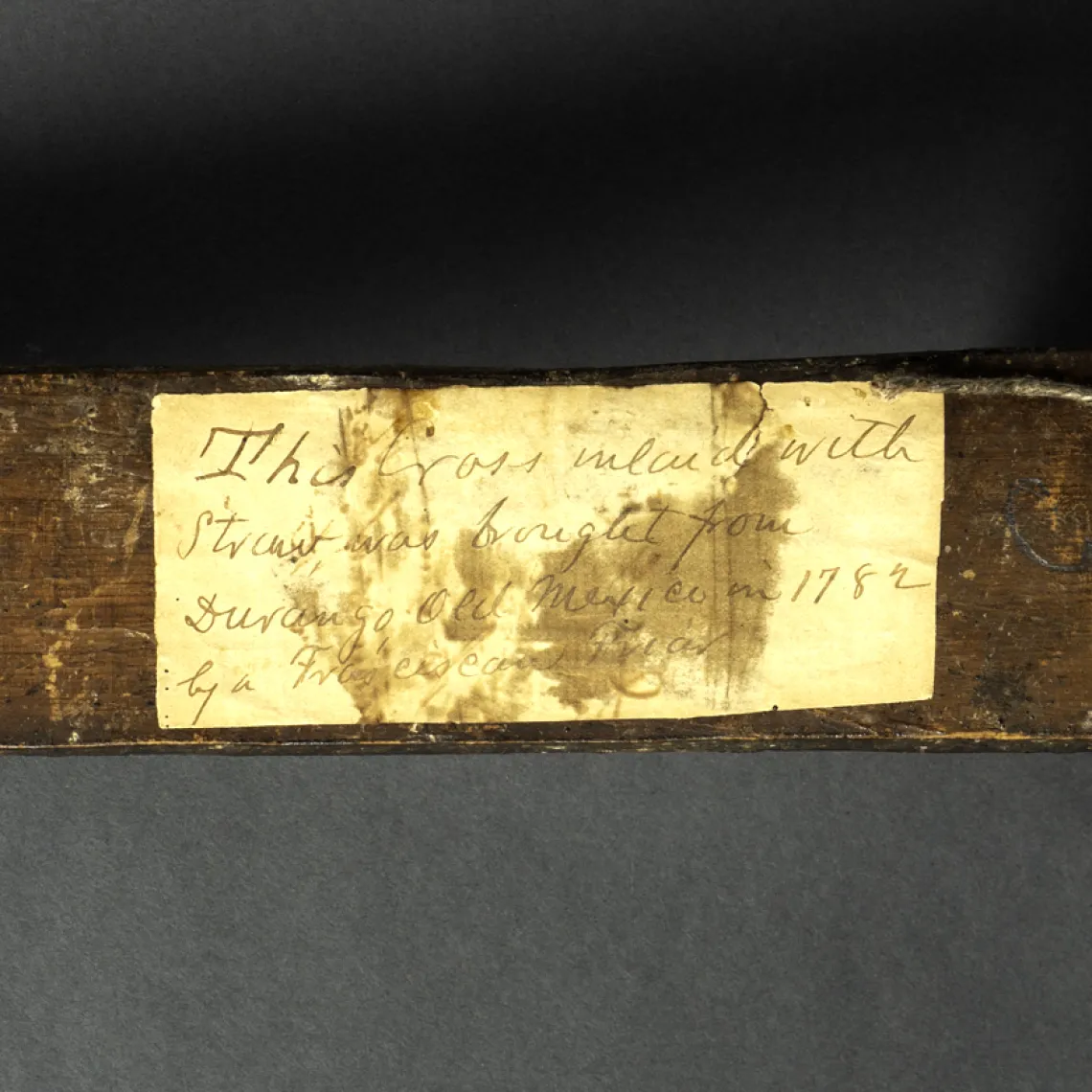
Detail of the label on the back of E-5341. It reads: “This cross inlaid with straw was brought from Durango, Old Mexico in 1782 by a Franciscan Friar.”
Through the ‘lucid lens of hindsight,’ Many Mexicos could have focused even more on its subtitle, Vistas de la Frontera, by making more transparent for visitors the historical symmetries and asymmetries between Mexico’s arid, less populated far north and the more densely populated stretches of its semi-arid center and the humid zones farther south. The dearth of material culture in the ASM collections related to contemporary issues such as immigration or free trade, however, as well as that of our community partners, shaped many of our decisions on what we could emphasize in any meaningful way. All of this is to say that, given our druthers and more time, we would have identified additional objects and sought out more community partners in order to better contextualize for our visitors the significance of contemporary phenomena. But the resurgence of the political debate in the United States over Mexican immigration tells me quite clearly, as the exhibit’s lead curator, that its online revival is timely, even crucial. Tomorrow has arrived and, much like ten years ago when the exhibit opened, amity and civility can seem far removed from the politics of immigration. Mindful of our shared and contested history, I recall the quote attributed to Mark Twain: “History does not repeat itself, but it does rhyme.”
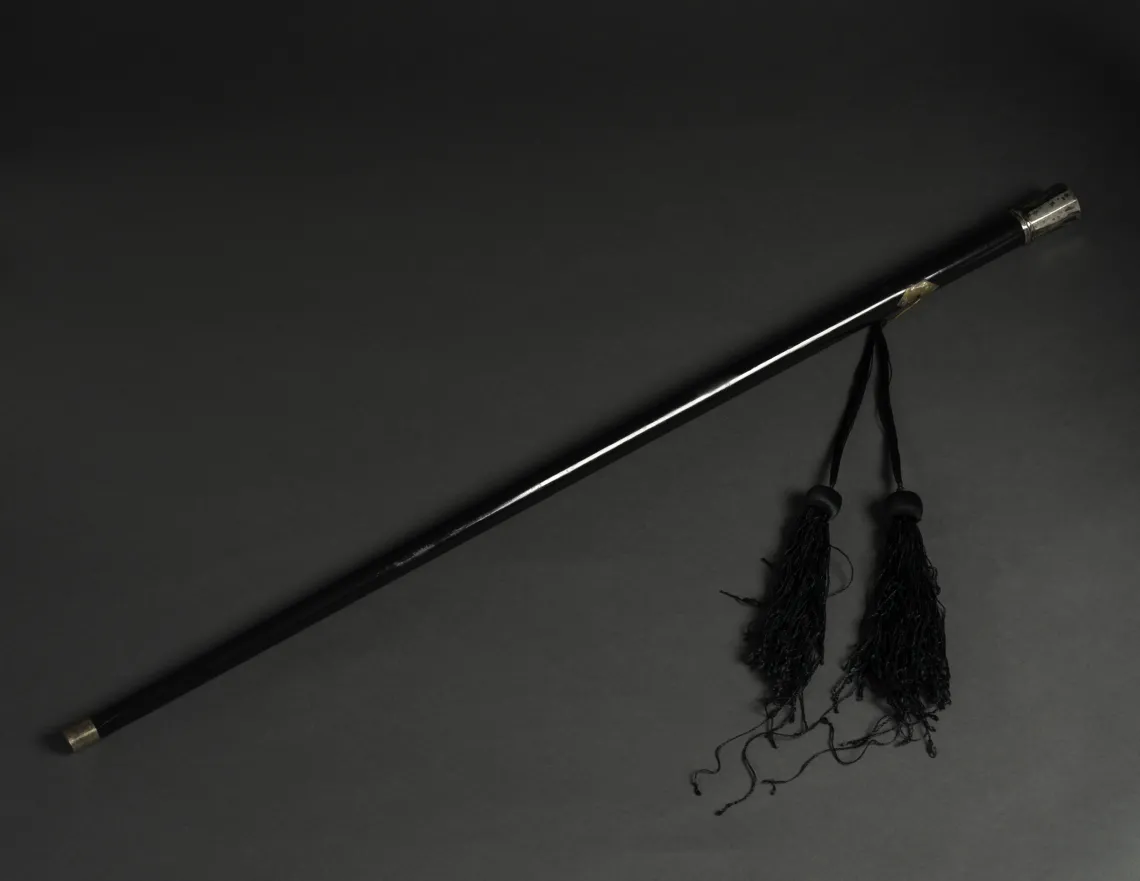
Tzotzil Indian Cane of Office, ca. 1964. Inscription: PRECIDENTE (Presidente) MUNICIPAL LARRAINZAR. San Andrés Larráinzar, Chiapas. Purchase from Dr. William Holland (ASM Catalog No. E-6220). Hover your mouse over the image to zoom in.
On a personal note, I want to conclude my retrospective by sharing with ASM’s online visitors a phrase that has been uttered nearly every day in Mexico, either publicly or privately, since 1519. Americans and Mexicans have been consumed by so much loss, uncertainty, and social fracture during these last few months that lofty words or inspired poetry just seem inadequate for these times, so I’m keeping it simple but sincere: Pax vobiscum, la paz esté con vosotros, la paz esté con todos ustedes, Peace be with you.
Thank you for your continuing support of the Arizona State Museum.
Michael M. Brescia
Curator of Ethnohistory
Lead curator, Many Mexicos: Vistas de la Frontera exhibit (2010-2012)





